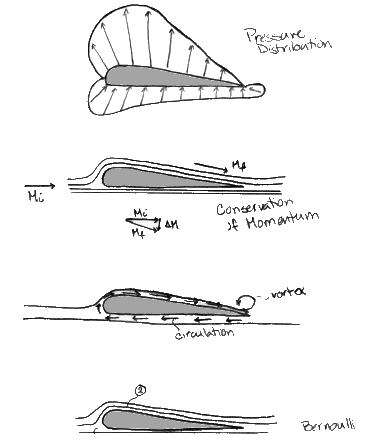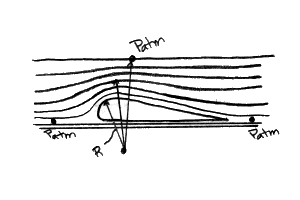
What is the purpose of hydrofoils? How do they work?
There are many purposes for hydrofoils. The main reason people or buisnesses install hydrofoils onto their watercraft is to decrease the drag of the boat as it travels through the water. By decreasing the drag, the watercraft is able to travel at higher speeds while burning less fuel. This makes use of the watercraft much more economical and provides a smoother, more comfortable ride because the watercraft rides above the reach of most of the waves.
Another reason to use hydrofoils is because they are fun. The
picture below shows a water ski that has been transformed into something that
you sit on with your feet in front of you while you are "floating on air"
behind a ski boat.

To see more at Sky Ski visit http://www.skyski.com/
When used on sail boats, hydrofoils can increase the top speed by quite a bit. Once the hull of the sail boat is out the the water the drag from the water is much less. Simply explained, there is less surface area "rubbing" on the water to slow the boat down. This means that even with gentle winds, a small boat can really get moving.
Most hydrofoils lift the watercraft that they are supporting in the same way that airplane wings keep the plane supported in the air. With enough lift on the water foils, the hull of the watercraft is lifted out of the water. Foils create lift when the water traveling over the top surface of the foil goes faster than the water traveling over the bottom (by curving the top of the foil). Where there is faster velocity (of the water in these cases) there is lower pressure. If there is higher pressure on the bottom of the foil, there will be a lifting force on the foil. Most foils are positioned from parallel to the hull to 5 degrees up. They are angled from side to side to allow a portion of the foil to come out of the water as the boat rises, thus allowing the boat to maintain stability by keeping a portion of the foils in submerged in the water.
However, foils do not have to be curved on the top. Some foils are simply positioned to have a positive angle of attack. These foils act by simply pushing the water down at high speeds and creating a lifting force on the watercraft by action and reaction. These foils are actually slightly less stable than the previous foils because they do not stay partially submerged in the water. Watercrafts with these kinds of foils tend to "skid" when turning at high speeds because there is no part of the craft in the water to provide the necessary friction for turning.
The main reason that hydrofoils work is because of Newton's Third Law: for every action force there is an equal and opposite reaction force. In layman's terms, this means that for every unit of force that the hydrofoil is pushing down on the water, the water is pushing back with the same force. This resistive force is what supports the weight of the watercraft on the hydrofoil.
These diagrams show how the pressure is distributed as described by Bernoulli's equation(Po = P1 + ½rv1² + rgy1 = P2 + ½rv2² + rgy2).
Po Stagnation Pressure [Pa] or [lbf/ft2]
P Pressure [Pa] or [lbf/ft2]
r Density [kg/m3] or [lbf/ft3]
V Velocity [m/s] or [ft/s]
g Gravitational Constant [m/s2] or [ft/s2]
y Height [m] or [ft]
His equation, simply worded, says that when an object is moving through a fluid, the faster the fluild moves over the surface, the less the pressure on the surface. This means that if the fluid (water in this case) moves faster over the top of the foil then there is more pressure on the bottom than on the top.

More pictures and information at http://web.mit.edu/2.972/www/reports/hydrofoil/hydrofoil.html
Another equation that applies to the lift produced by hydrofoils is Euler's Equation (d(p+rgy)/dn = rv²/R).
P Pressure [Pa] or [lbf/ft2]
r Density [kg/m3] or [lbf/ft3]
V Velocity [m/s] or [ft/s]
g Gravitational Constant [m/s2] or [ft/s2]
y Height [m] or [ft]
n Vector in Radial Direction ---
R Radius of Curvature of Streamline [m] or [ft]

More pictures and information at http://web.mit.edu/2.972/www/reports/hydrofoil/hydrofoil.html